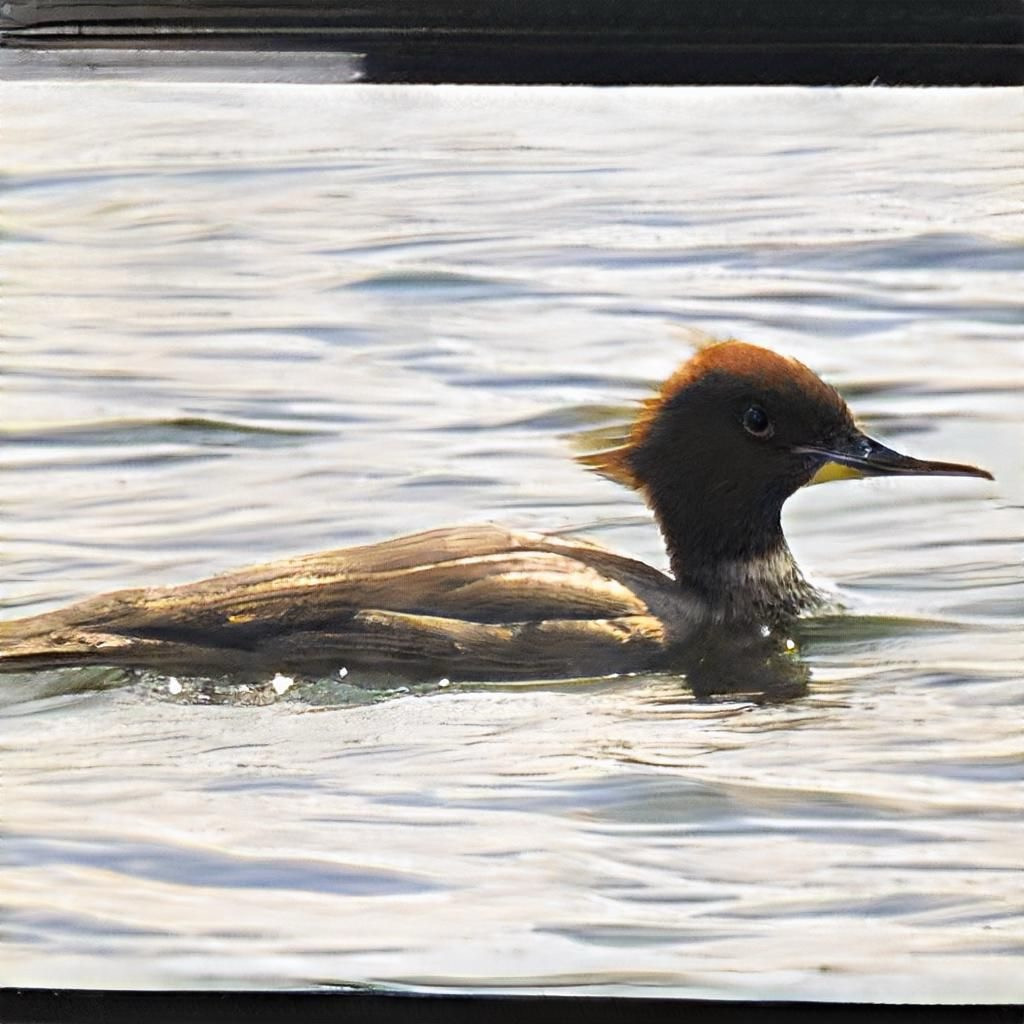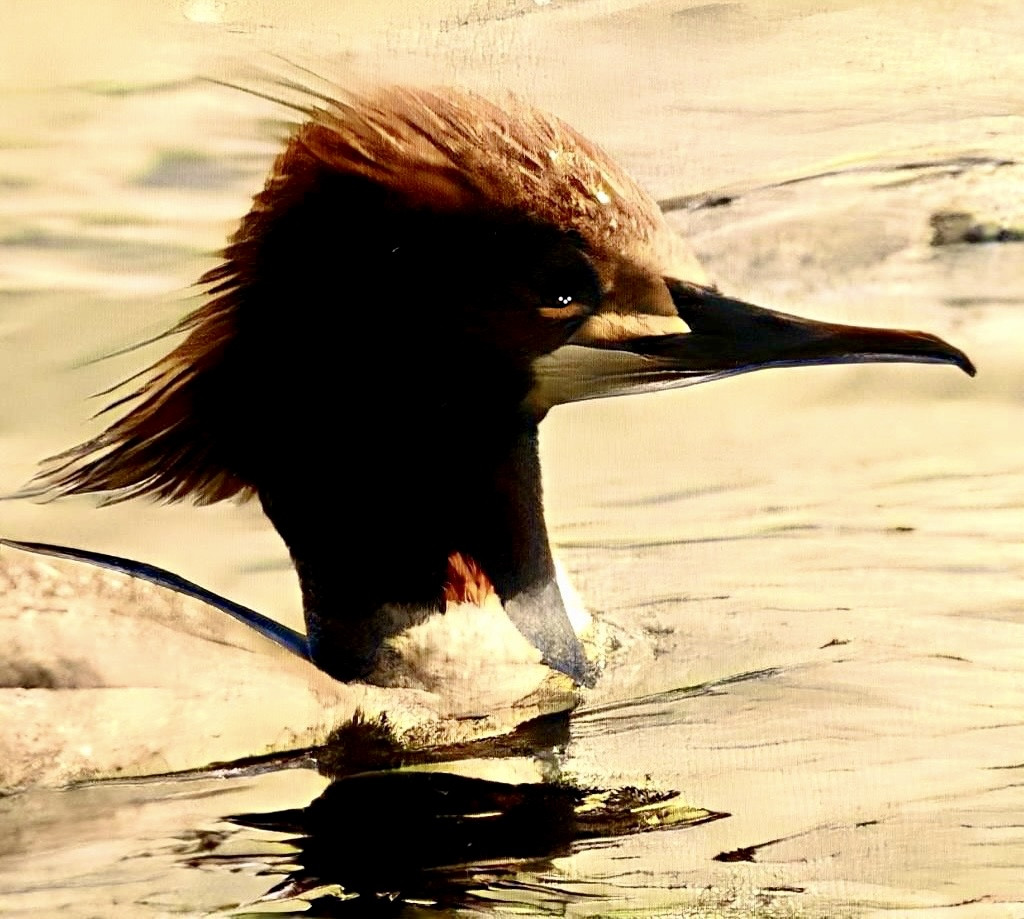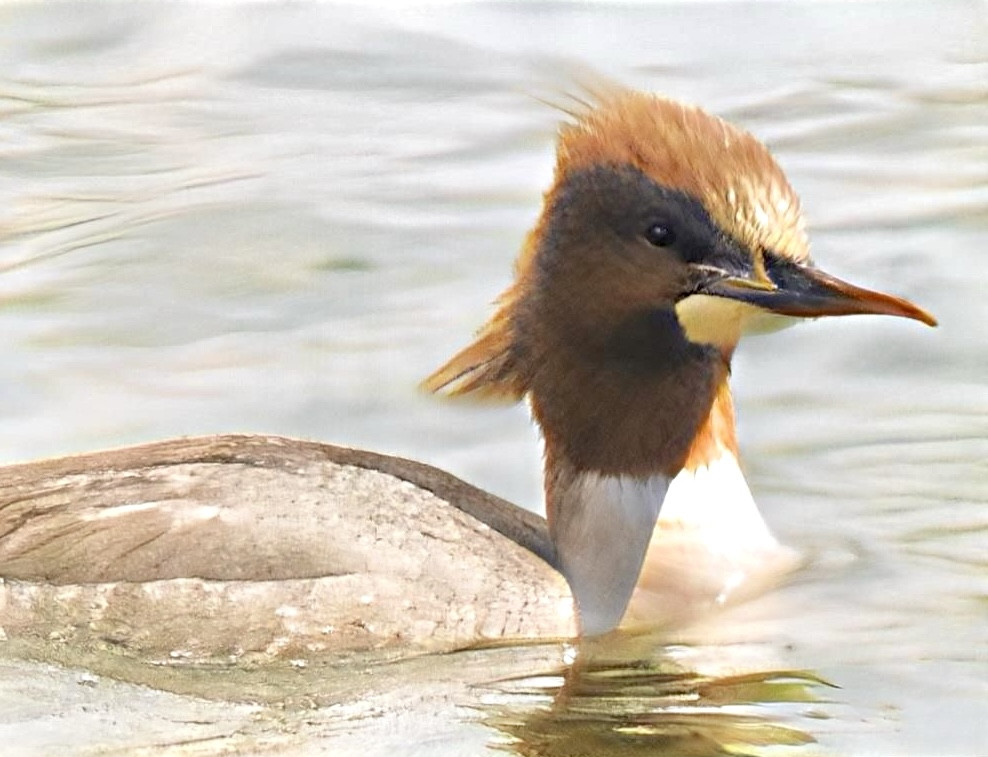Beschreibung
The deep waters around Lake Vättern are ice-free most years. This makes it an excellent wintering area for birds. The lake holds large wintering populations of gulls like Sturmmöwe, Silbermöwe and Mantelmöwe. This is also one of the best places for the rare Eismöwe, although it is not seen most years. Most gulls winter around Motala. The area also holds wintering waterfowl. Most commonly: Gänsesäger, Höckerschwan, Graureiher, Singschwan, Reiherente and Schellente. Around Vadstenaviken large amounts (many hundreds) of Stockente winter. Often with other rarer (wintering) dabbling ducks in the mix. The lake also holds wintering populations of Kormoran, Mittelsäger, Zwergsäger (visitors from Boren) Haubentaucher, Zwergtaucher, and during mild winters: Ohrentaucher, Samtente, Prachttaucher and Eisente. The large fields around Vadstena and Norrsten hold wintering geese, Berghänfling and Schneeammer. Many birds of prey also winter. Most common are Sperber, and Seeadler.
During the last weeks of Febuari the first spring birds arrive. Star, Feldlerche, Buchfink, and Kiebitz are usually the first to arrive. Some of the previously mentioned birds might start to winter if the winters continue to be mild. Many geese like Weißwangengans, Graugans, Saatgans, Bläßgans Tundrasaatgans and Kanadagans are often seen. Most geese congregate around Tycklingen and Norrsten. Sometimes Kurzschnabelgans is also found.
During March most of the geese increase in number. More birds of prey arrive: Raufußbussard, Turmfalke, Wanderfalke, and Rotmilan. In Vadstenaviken large amounts of dabbling ducks often rest. Brandgans (Regular), Lachmöwe, Austernfischer, and Bekassine also arrive during this period. From this period onwards Silberreiher is sometimes seen.
During April other wader along with Bluthänfling and Wiesenpieper arrive. During April-May large amounts of passerine birds, wader, gulls, and terns use the lake as a landmark for migration. It starts in the middle of April with thousands of Buchfink and Bergfink, continuing with thousands of Großer Brachvogel, with smaller amounts of other waders like Regenbrachvogel, Pfuhlschnepfe, Kampfläufer and Rotschenkel. Also large amounts of gulls like Lachmöwe and Sturmmöwe. In early May hundreds of terns (Flußseeschwalbe, Küstenseeschwalbe) pass. Along with rarer birds like Trauerseeschwalbe, Dreizehenmöwe (quite rare) and Zwergmöwe.
During the summer many species of night-active birds can be heard like Feldschwirl, Sprosser, Wachtelkönig, Drosselrohrsänger (vadstena reningsverk), Wachtel and sometimes Schlagschwirl. Many other warblers can be found during this period. In the cities of Motala and Vadstena city birds like Türkentaube, Grünfink, Hausrotschwanz (missing most winters), Bergfink, Felsentaube, and Mönchsgrasmücke can be found year round.
Details
Zugang
Parking can be done at ample places. Some of them are: Tycklingen, Motala, Råssnäsudden, and Vadstena castle. Click on a P in the map to get directions to that area.
Terrain und Habitat
Wald , Feuchtgebiet , Vereinzelte Bäume und Büsche , Grasland, Wiesen , Tal , Ebene , Plateau , See , Strand , Schlammflächen , Landwirtschaft , Schilfflächen , Fluss , Stadt/DorfBedingungen
Flach , Hügelig , Sandig , Sumpfig , Offene LandschaftRundweg
JaIst ein Spektiv nützlich?
Möglicherweise hilfreichGute Beobachtungszeit
GanzjährigBeste Beobachtungszeit
WinterRoute
asphaltierte StraßeSchwierigkeitsgrad der Tour
DurchschnittlichErreichbarkeit
zu Fuß , Fahrrad , AutoBeobachtungshütten oder -türme
NeinZusätzliche Informationen
Be respectful of the birds. Especially during breeding season.






